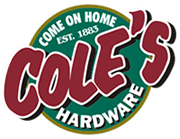
Before Opening:
Business Plan:
This is the blueprint for your business, outlining your business model, market research, marketing strategies, financial projections, organizational structure, and other key details about your operations.
Licenses and Permits:
These will vary by location, type of retail business, and other factors. You may need a business license, seller’s permit, or health department permit, among others.
Consult with a legal expert to ensure you meet all legal requirements.
Location:
Choose a location that will maximize exposure to your target customer demographic.
Consider factors such as visibility, proximity to complementary businesses, parking availability, and local zoning laws.
Lease Agreement:
A lease agreement for your retail space should be negotiated carefully. Consider the length of the lease, renewal options, rent increases, and other factors.
It is advisable to consult with an attorney.
Store Layout and Design:
This involves designing the physical layout of your store to optimize sales.
You need to consider traffic flow, product placement, signage, lighting, and other factors that influence the shopping experience.
Inventory:
Your inventory should reflect the needs and desires of your target market. Consider variety, quality, price point, and trends in your industry.
Make sure to have an inventory management system in place.
Equipment and Supplies:
This includes everything from cash registers and security systems to display racks, shelving, and cleaning supplies.
Also consider software like point-of-sale (POS) systems.
Vendor Relationships:
Cultivate strong relationships with vendors to ensure a steady supply of inventory. Understand their pricing, delivery schedules, return policies, and other terms.
Hiring Staff:
Recruit, interview, and hire employees who are a good fit for your business. Train them in customer service, product knowledge, store policies, and POS system use.
Accounting System:
Having an organized accounting system will help you track income and expenses, manage cash flow, handle payroll, and prepare for tax time. You may want to hire a professional accountant or bookkeeper.
Store Opening:
Merchandising:
Merchandising involves displaying your products in a way that entices customers to make purchases.
This involves organizing products, creating attractive displays, and regularly updating your visual merchandising.
Store Policies:
Your policies should be clear, reasonable, and easily accessible to customers.
This includes policies on returns and exchanges, complaints, special orders, and other customer service scenarios.
Final Inspections:
Before opening, walk through your store to check that everything is in order. Are your products attractively displayed? Is your store clean and inviting?
Do all of your systems and equipment work properly?
Inventory System:
Your inventory management system tracks what you have in stock, what’s been sold, and what needs to be reordered.
Ensure that all products are correctly entered into the system.
Staffing:
Confirm that all staff are trained and ready for the opening day. You may want to schedule extra staff for the first few days to handle increased customer volume.
Marketing:
Promote your store opening through various marketing channels.
You might run ads on social media, send out a press release, hold a grand opening event, or put up signage around your neighborhood.
After Opening:
Customer Service:
Prioritize providing excellent service to your customers.
This includes handling complaints gracefully, offering helpful product advice, and fostering a friendly shopping environment.
Marketing and Advertising:
Regularly promote your store and its products through strategic advertising and marketing initiatives. Keep your customers engaged and attract new ones.
Monitor Sales and Inventory:
Regularly analyze your sales data and inventory levels.
This can help you identify which products are selling well and which aren’t, allowing you to adjust your inventory orders accordingly.
Maintain the Store:
Keep your store clean, organized, and aesthetically pleasing at all times.
Regularly check for and address any maintenance needs to ensure a positive shopping environment.
Staff Management:
Make sure your staff is consistently offering great customer service and that they’re happy in their roles. Regular training and performance reviews can help with this.
Financial Management:
Regularly review your financial situation. Are you meeting your sales targets? Are you staying within your budget? Do you need to adjust your prices or cut expenses?
Adjust Based on Feedback:
Be open to feedback from customers and employees. They can provide valuable insights into how you can improve your business.
Comply with Laws and Regulations:
Regularly review your operations to ensure you’re complying with all applicable laws and regulations, which could include labor laws, health and safety regulations, and tax laws.
Continual Marketing Efforts:
Maintain an active presence on your chosen marketing platforms.
Keep your website and social media accounts updated, send out newsletters, or hold regular sales events to keep customers engaged.
Regularly Update Business Plan:
As you learn more about your business, customers, and the retail landscape, regularly update your business plan to reflect these insights.
This ensures you continue to have a clear direction for your business.
















































































